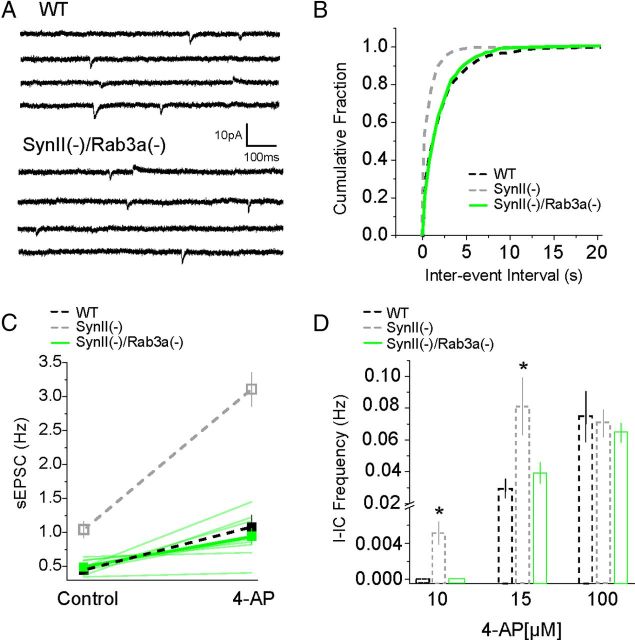Figure 7.
Rab3a deletion balances the increase in sEPSC frequency and epileptiform activity observed in presymptomatic Syn II(−) synapses. A, Recordings of sEPSCs (inward) and sIPSCs (outward) activity in the absence of blockers at −50 mV holding potential in WT and SynII(−)/Rab3a(−) slices. B, sEPSC frequency in SynII(−)/Rab3a(−) synapses is comparable with that recorded in WT (p = 0.38 per Kolmogorov–Smirnov test) but significantly different from that seen in SynII(−) synapses (p = 0.008). C, 4-AP has a modest but significant effect on spontaneous activity in SynII(−)/Rab3a(−) DKO synapses (p = 0.043), which is comparable with the effect observed in WT synapses (p = 0.6) but significantly smaller than that observed in SynII(−) synapses (p = 0.05). The thin green lines represent individual experiments. D, 4-AP-induced epileptiform activity in SynII(−)/Rab3a(−) DKO is similar to that recorded in WT slices but significantly lower than that recorded in SynII(−) slices at low 4-AP concentrations (10 and 15 μm). Asterisks indicate a significant difference between SynII(−)/Rab3a DKO and SynII(−) lines (p < 0.05 per ANOVA followed by post hoc Tukey test). Dotted lines indicate the replotted data from Figures 1 and 2. Data collected from 4 Syn II(−)/Rab3a(−) animals (9 cells).

